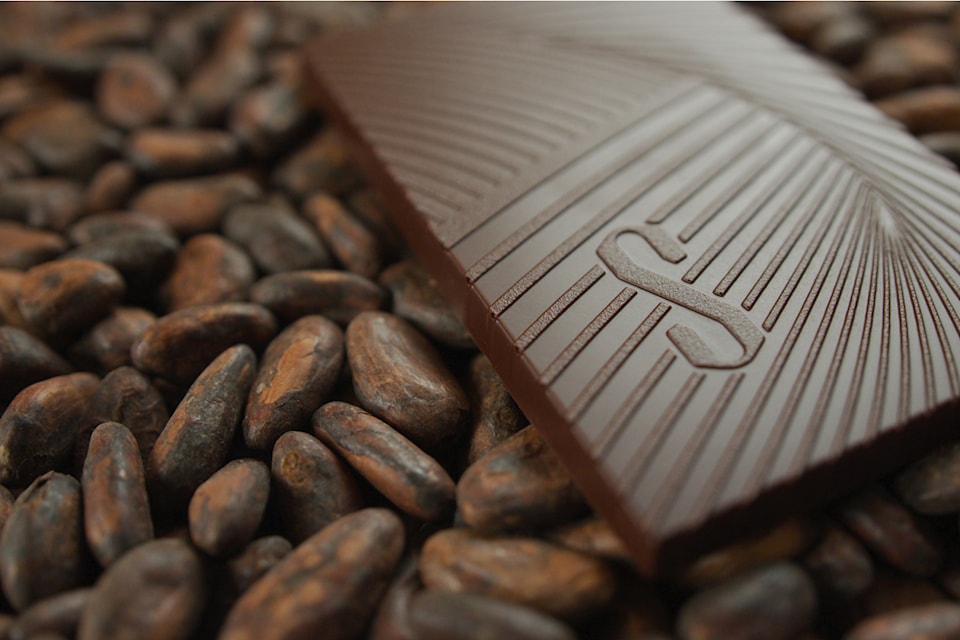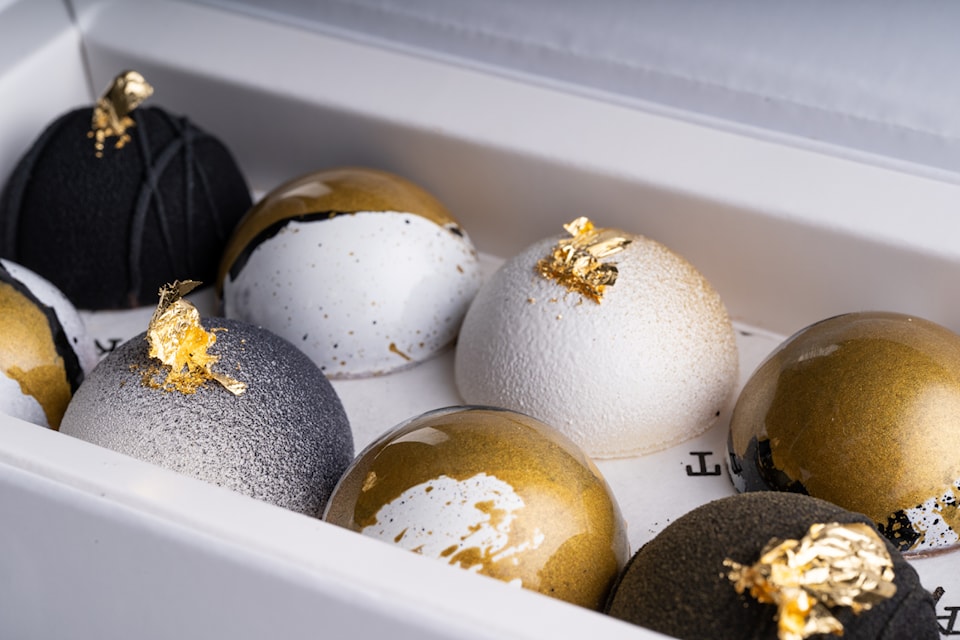Chocolate has long been a universal indulgence: that sweet spot where a simple, natural food product meets fine art.
From early Latin American civilizations to modern chocolatiers, cacao – derived from the roasted and ground seeds of a tropical tree by the same name – has been a sacred, medicinal and luxury food.
Whether it’s turned into stunning chocolate truffles and single-origin bars by artisan makers, or used to make brand-name candy, chocolate makes addicts of us all.
And as we temper our ideas around indulgence, with a focus on mindful consumption and personal health, we can learn more about how to choose and taste the nuances of fine chocolate from a new breed of artisan chocolatiers, bean-to-bar makers and passionate chocolate curators here at home.
Chocolate: the last frontier
Many consumers choose local, sustainable food – from pasture-raised meats and heirloom vegetables to artisan cheeses, coffee and craft beer – but chocolate has slipped under our radar.
Cacao is grown by family farmers in equatorial regions around the world. Whether used to make popular candy bars or upscale truffles, most chocolate starts with a handful of big chocolate makers who dominate 95 per cent of the market. They want high yields and pay low commodity prices, so most farmers still live in poverty, with cacao production linked to child labour and destruction of tropical rain forests.
It’s a lot of information for a chocolate lover to absorb, but when you know, you know. And this has spawned a new generation of craft chocolate makers, who buy premium beans direct from farmers to produce traceable, single-origin chocolate with ethics and sustainability in mind.
Better beans
Cacao (or cocoa) beans are an agricultural commodity, extracted from the big fleshy fruits of the Theobroma (cacao) tree. Beans are fermented and dried on the farm, then shipped to large manufacturers, where they’re ground into raw cocoa mass (solids and cocoa butter) and combined with sugar, to make the chocolate that goes into every truffle, bar, cake and pudding you’ve ever eaten.
Bean-to-bar makers create “single-origin” bars, using premium “fine flavour cacao” from a single country, region or farm, which is a far cry from the bulk “industrial” chocolate that dominates the commercial world.
Fine-grade beans make up less than three per cent of cacao production but are prized for unique flavours and aromas. It’s like a rare wine with roots in Bordeaux or a wild Pacific oyster – these beans reflect their “terroir,” including genetics, growing conditions and care in harvesting. It’s no surprise that the best chocolate makers want fine-grade cacao for their craft chocolate bars.

Canada is a hotbed of these artisanal chocolate makers, from bean-to-bar pioneer SOMA Chocolatemaker in Toronto to Vancouver’s Kasama Chocolate and East Van Roasters, Victoria’s Sirene Chocolate and Wallace Craft Chocolate, the latest award-winning bean-to-bar maker on the block.
From bean to bar
It’s flavour that drives Taylor Kennedy of award-winning Sirene Chocolate.
After years travelling the world as a photographer with the National Geographic Society, Kennedy began making chocolate from scratch in 2013, connecting with farmers producing high-quality beans and paying them well, and then working meticulously to make unique single-origin chocolate bars in his small home-based workshop.
Whether it’s a cacao co-operative in Guatemala or farmers in Venezuela and Uganda, Kennedy looks for the tastiest beans he can buy, often from low-yielding trees that have been selected and bred over time.
“You know if you’re making anything, if you start with better quality ingredients you get a much better product, and that is what I am really aiming for,” he says.
Maintaining honest and ethical relationships with farmers, and paying significantly higher rates for their fine cacao, “is the incentive for them to maintain a very high quality.”
Kennedy makes a variety of bars, from his eight yellow-packaged Sirene standards to a rotating selection of limited-edition, single-origin bars.
“Customers always want something new and different,” he says, and demand for rare, high-cacao bars is growing.
Among the sacks of cacao in his tiny facility are beans from Vanuatu, a remote island in the South Pacific, for his newest series of bars. The biggest trend is in 100 per cent cacao bars, with no added sugar, and he produces a 65 per cent dark milk chocolate, made with “dark chocolate with milk added as a seasoning.”
All of this comes at a price, with most bean-to-bar makers charging $10 to $20 for a premium bar. Cacao prices have risen dramatically this year, a result of climate-induced crop failures and commodity speculation, but Taylor is determined not to raise his retail prices.
“I have never pushed for a lower price from farmers, and I never would – they have gotten such a short end of the stick for so long,” he says. “There’s lots of other places in the supply chain to reduce costs.”
A curated collection
Explore The Chocolate Project, David Mincey’s compact bean-to-bar chocolate shop in downtown Victoria, and you’ll discover a carefully vetted selection of the finest craft chocolate, including some 400 bars from 90 different makers, and the largest collection in the country. It’s like a bijoux chocolate bar museum where you can learn about the provenance of each one by reading the colourful, graphic labels.
Most feature single-origin cacao from a specific growing region, co-op or farm, and that’s the key to authenticity.
“We’re looking for traceable, sustainable information,” says the local chef-turned-chocolate guru. “How they are conveying the origin of the cacao – not where the chocolate bar is made but actually where it’s grown – is important.”
That’s a good way for customers to weed out pretenders in the exploding premium chocolate bar business.
“Big chocolate companies see what’s going on in the craft chocolate movement, and it’s very easy for them to mimic that with packaging,” says David, who has been judging craft chocolate at international competitions for years. “There’s a huge problem of greenwashing in the corporate chocolate world, and that makes it confusing for consumers.”
Even popular certification programs have been compromised, so choosing bars with awards from the International Chocolate Awards or the Academy of Chocolate can help. But tasting is believing and, in David’s shop, it’s all about education.
Put a piece of pure craft chocolate on your tongue, let it melt and tease out the magical nuances of single-origin cacao. It’s a game changer.
“Even if they don’t know why, they find it tastes better, they are thinking about what they are eating and they are becoming more critical,” says David, pointing to the sweet dark cherry notes in a Tanzanian bar or the fudgy, raisin-like flavour in one made with cacao from a single plantation in Brazil.
David offers chocolate workshops and tasting events, or you can just drop into the shop to taste a few different craft chocolate bars side by side, or contrast them with a premium bar from the supermarket. Many craft makers sell their bars online and offer tasting selections or gift packs – it’s the perfect way to get a tasting party started!
Chocolatiers
Kelowna’s Julian Helman crafts “modernist” chocolates with colourful glazes and local fruit fillings, and occasionally creates his own chocolate from pre-roasted cocoa beans. Working with Valrhona couverture, he explores single-origin chocolate and makes a variety of unique inclusion bars, and his Karat Chocolate + Pastry Boutique is a destination for chocolate lovers.
A chef and pastry chef by trade, Julian’s whimsical Karat bars channel classic treats, whether it’s his Oatmeal Cookie bar made with caramelized “blonde” couverture, oats, roasted almonds, cinnamon, raisins and medjool dates; or a fanciful Pineapple Upside Down bar with freeze-dried pineapple, toasted coconut and macadamia nuts. New experiments include freeze-dried fruit for his Peaches and Cream bar, a violet bar using flowers from a local forager, and a Carrot Cake bar with freeze-dried local carrots.
“I’ve travelled a lot, I’ve seen cocoa plantations, and it just kind of gripped me,” Julian says of his chocolate obsession. “I’m still very involved, working as a pastry chef every day, and I love it, but chocolate is my true passion.”
Julian puts in long hours, turning out some 4,500 handmade Karat chocolates each day. And educating his customers about the origins of chocolate is important.
“Some people don’t even realize that chocolate is an agricultural product,” he says, “but I think people are becoming more aware about where their food comes from.”
The bottom line
Craft chocolate is a new world to explore for the savvy chocoholic.
Discovering nuanced flavours in single origin chocolate is a revelation and adding that layer of traceability and support for farm families, makes this kind of chocolate the poster child for mindful indulgence.
Quality, ethically sourced chocolate will cost more than industrially-produced chocolate, but like anything, there’s no free lunch. Even when costs are hidden, someone is paying the price, and informed consumers understand the direct and indirect costs of food and spend their food dollars accordingly.
Chocolate may be an indulgence, but as Julian notes, buying better chocolate won’t break the bank.
“You can spend $10 and you can legit put something in your pocket that won awards across the world,” he says. “And it’s pure and it’s good and you can feel good about what you’re buying.”
This feature appeared in the November edition of Boulevard Okanagan.



